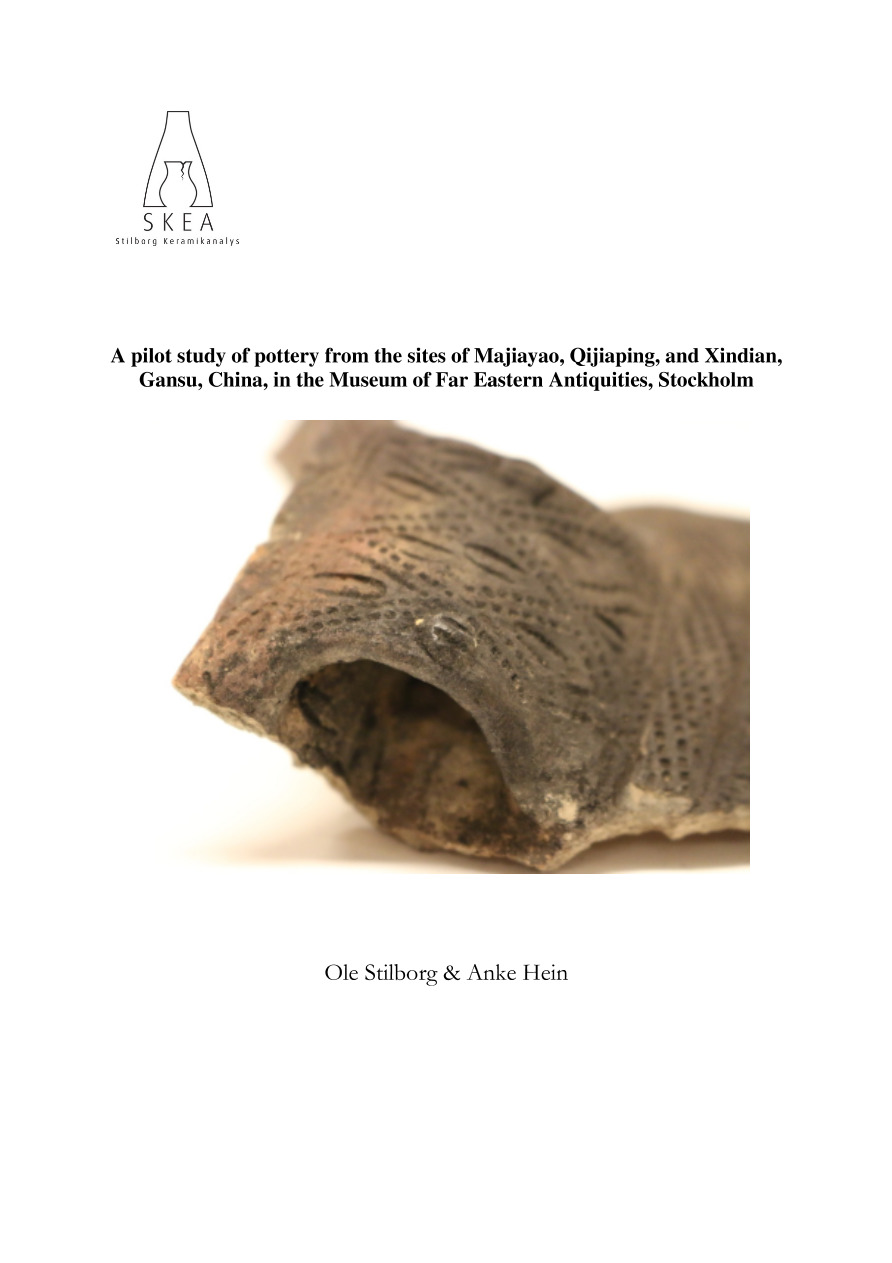The purpose of the pilot study was to ascertain the scientific potential of archaeometric analyses on samples from the Chinese prehistoric ceramic collection housed at the Museum of Far Eastern Antiquities, Stockholm. This collection comprises items collected during the first scientific excavations ever conducted in China, undertaken by the Swedish geologist Johan Gunnar Andersson in the 1920s (Fiskesjö 2011). The present study is focusing on material from Gansu, Northwest China, especially sites that have recently come under re-excavation (Womack et al. 2017), thus providing material for ground-truthing Andersson’s nearly 100-year old excavation results.
Gansu is thought of as an exchange corridor between China and Central Asia active from the Neolithic onwards. Up until the early Bronze Age (BA), the development is interpreted as a succession of large cultural horizons defined solely on ceramic forms and decoration types dominating the whole Northwest. Within the current culture-chronological scheme, the painted fine-wares of Majiayao (c. 3,300-2,000 BC) are seen as diagnostic for the Neolithic and the undecorated fine-ware double-handled vessels of Qijia (c. 2300-1600 BC) are seen as typical for the early BA. In the middle BA, however, a number of new ceramic facies of dazzling variety and uneven quality appear whose connections are poorly understood; these comprise Siwa (c. 1,600-700 BC), Xindian (c. 1,600-700 BC), Kayue (c. 1,600-400 BC), Shajing (c. 1,600-400 BC), as well as the late phases of Qijia and Siba to the utmost west (c. 1,950-1,550 BC). All of these dates are highly contested (Fiskesjö and Chen 2004; Shui Tao 2001).
In this first pilot study, financed by a grant from The John Fell Fund, we focus on the relationship between the Neolithic culture of Majiayao (generally split into the three phases of Majiayao, Machang, and Banshan), the early BA culture of Qijia, and the middle BA phenomenon of Xindian, as the types sites of all of these archaeological cultures are currently under renewed survey and excavation work.
In this study, we use thin section microscopy and chemical analyses with P-ED-XRF. The present report relates the results of the thin section study. Thin section studies are relatively uncommon in Chinese archaeology, with but a handful of studies throughout all periods of China, most of them published over the last few years (e.g., Bylin-Althin 1946; Quinn et al. 2017; Stoltman et al. 2009 and 2018; small portions of the PhD dissertation by Lin 2013; dissertation by Womack 2017). Instead, increasingly more studies rely exclusively on chemical analysis (Hong 2011; Hong et al. 2011 and 2012; criticized by Ren et al. 2013), which has proven to be problematic for ceramics research as raw material preparation – especially tempering or removal of inclusions – changes the chemistry of the resultant wares potentially in a significant way. Without petrographic analysis, which helps identify levigation, tempering and other production techniques influencing the composition of the material, differences in chemical composition due to raw material preparation may easily be miss-interpreted as differences in raw material source. In the case of northern China, chemical signatures are furthermore particularly problematic as the large Loess Plateau provides very similar material over large areas, making the identification of exact raw material origin problematic.
Furthermore, apart from chemical analysis aiming at identifying raw material origins, ceramics research on material from Northwest China still largely focuses on typo-chronology. What is sorely missing is a craft technological interpretation of these finds. Thin section studies including an interpretation...




 ARTIKLAR I WIKIPEDIA
ARTIKLAR I WIKIPEDIA ARTIKLAR I WIKIDATA
ARTIKLAR I WIKIDATA BILDER I WIKIMEDIA COMMONS
BILDER I WIKIMEDIA COMMONS





